
Getting started with LuckGrib
While LuckGrib has been designed to be easy to use, there are still a few things you can learn to make your initial experience more pleasant.
Scrolling and Zooming
![]()
One of the first things you will want to do is to zoom in, out and scroll the map around. If you have a laptop or desktop with a trackpad, the easiest way to navigate around the map is by using the gestures Apple has created for doing this. On the trackpad, you can use the two finger pinch to zoom in and out, along with the two finger track to scroll the map around. If this isn’t working for you, examine the System Preferences window, as shown above.
There is a video available, which describes this topic in more detail.
One very useful menu command related to this topic is the command to Center File in View. You can invoke this command with the Cmd-L shortcut. It does what you would expect - centers the selected file in the view.
Basic GRIB Viewing
When you start the application for the first time, you will see that it comes with a single example GRIB file. Go ahead and select that file by clicking on Sample.grb in the top left corner of the window.
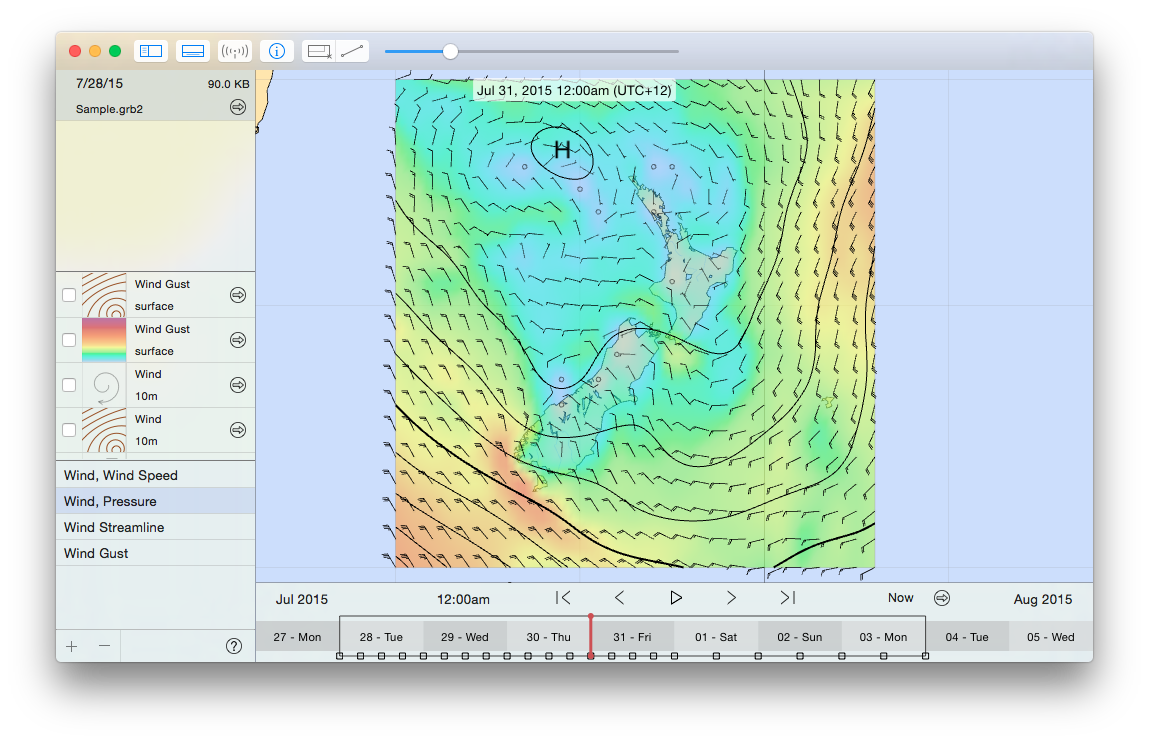
The LuckGrib window is broken into several main areas:
- the toolbar on top
- the sidebar on the left-hand side
- the GRIB time control area on the bottom
- the main window and information area
Each of these will be described in a little more detail.
Toolbar:


The Toolbar has several icons which control various aspects of the application. The least obvious point to make is that there are two tool icons: select region and measure distance. To select a region that you want to download data for, for example, simply select the Select Region tool and then click and drag in the main window.
If neither the Select Region or Measure Distance tools are selected, then clicking and dragging in the main window will pan the map. Try it out.
Main Window:
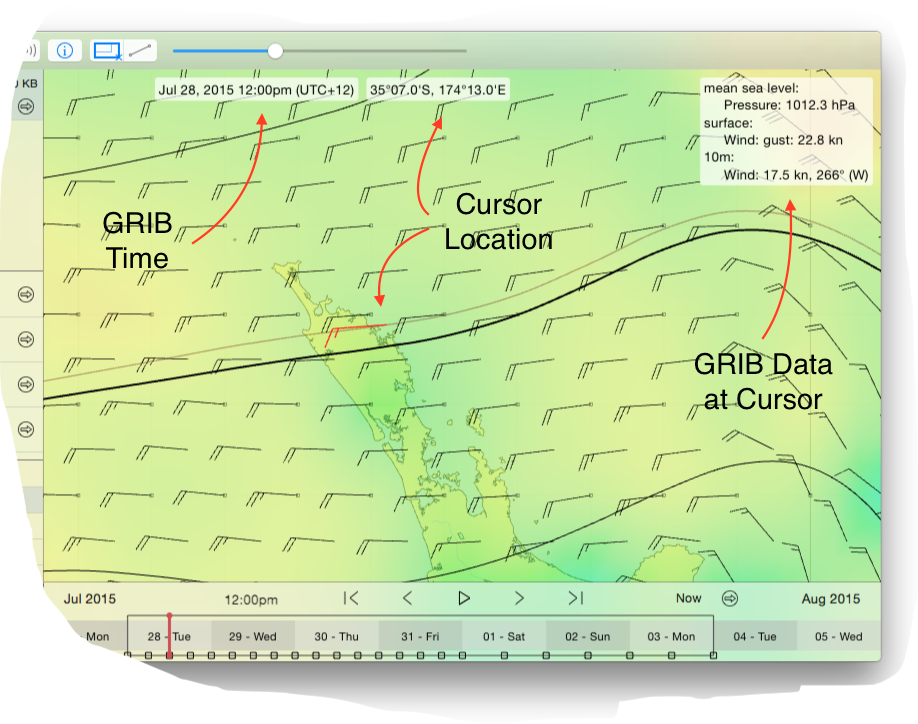
GRIB Time Control:
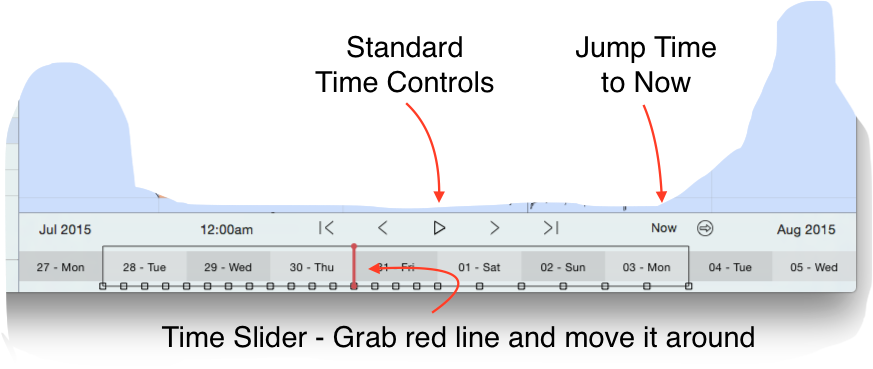
The easiest way to control the GRIB time is through the keyboard shortcuts which are provided. Use the left/right arrows to step to the previous/next available GRIB time. Cmd-left/right step to the start/end of the file. Option-left/right step backward and forward by one hour. Give it a try.
Sidebar:

The sidebar has three main areas. The content of the middle Draw Styles and bottom Draw Style Set areas will change according to which GRIB file is selected and the parameters it contains.
Also noted on this image is that there are many icons throughout LuckGrib that Reveal more information. Where ever you see the Reveal icon (the circled arrow,) if you press it, more options and information will reveal itself. The Help icon is also scattered around the application, providing help text in a variety of areas.
The easiest way of changing which Draw Styles are being displayed in the main window is to select one of the named Draw Style Sets. By selecting a Style Set, the set of styles associated with that set are automatically enabled and all others are disabled. Try this by clicking on the Style Sets available with the Sample GRIB file.
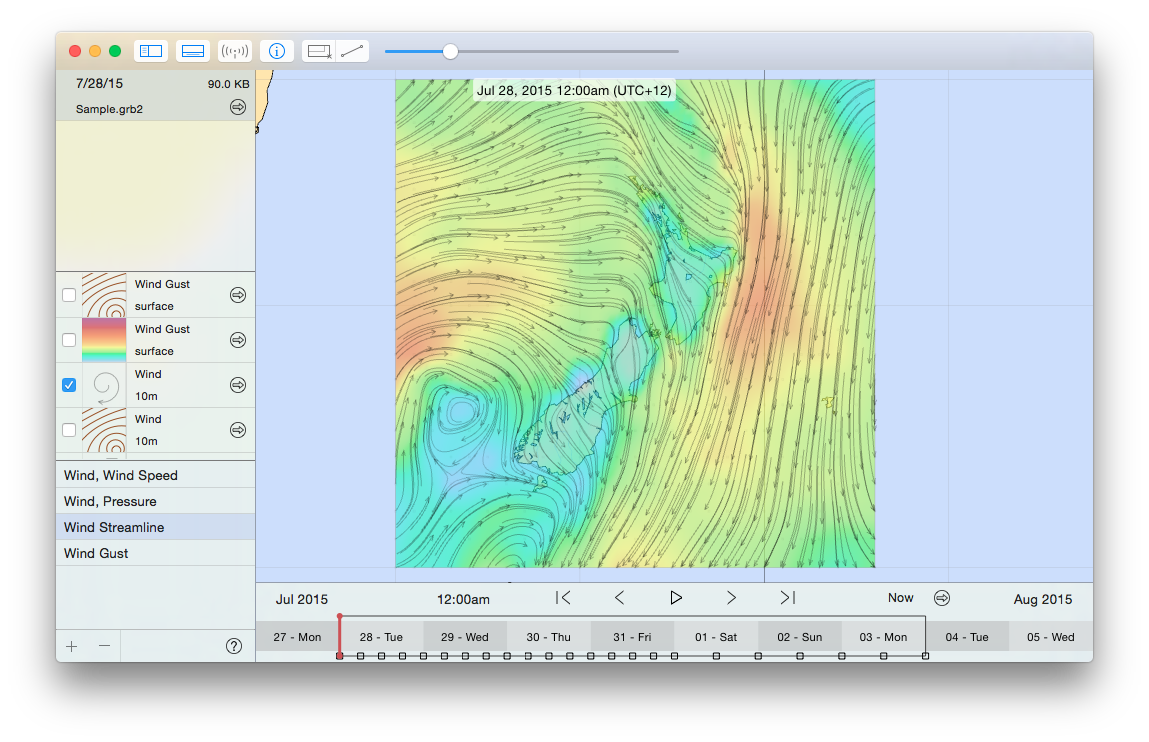
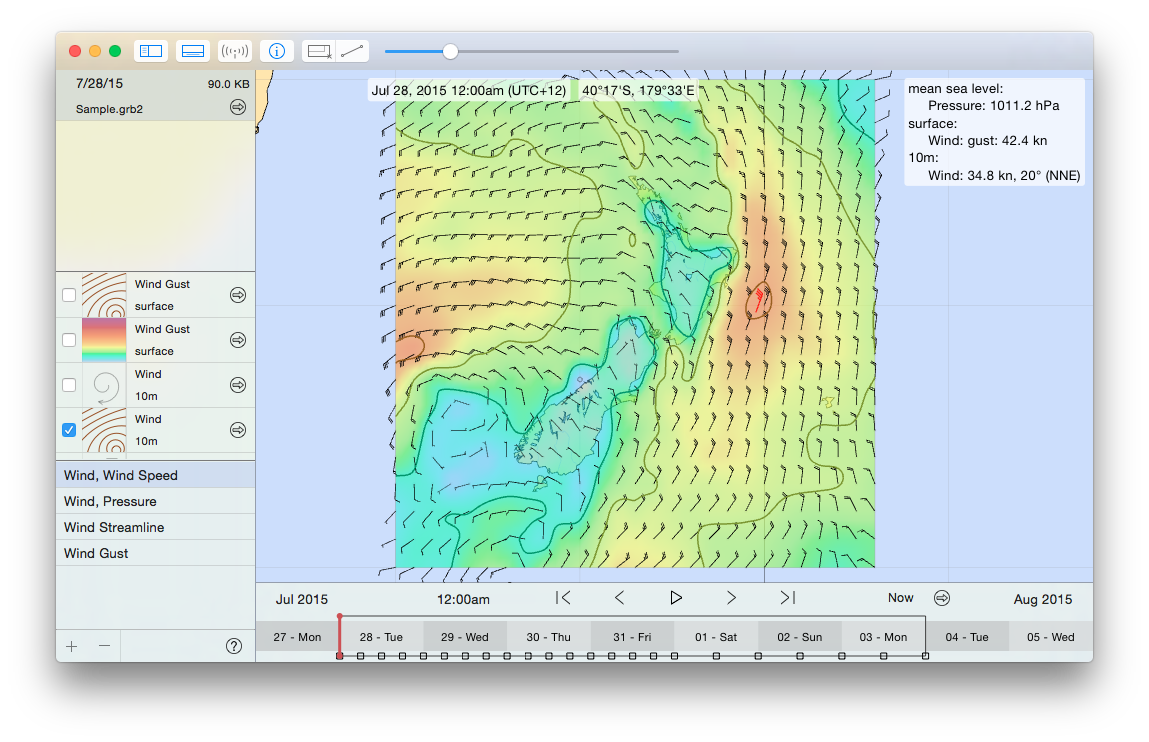
The Wind, Wind SpeedStyle Set shows a set of contours for the wind speed. The contours are set to be shown at 10 knots, 20 knots, gale strength, storm strength, hurricane force one, hurricane force two, and so on.
Preferences:

If you prefer to see the displayed data in different units, you can make your choices from within the Preferences window, available in the LuckGrib menu.
Requesting GRIB Data
There is a video available, which shows the process of downloading a GRIB file.
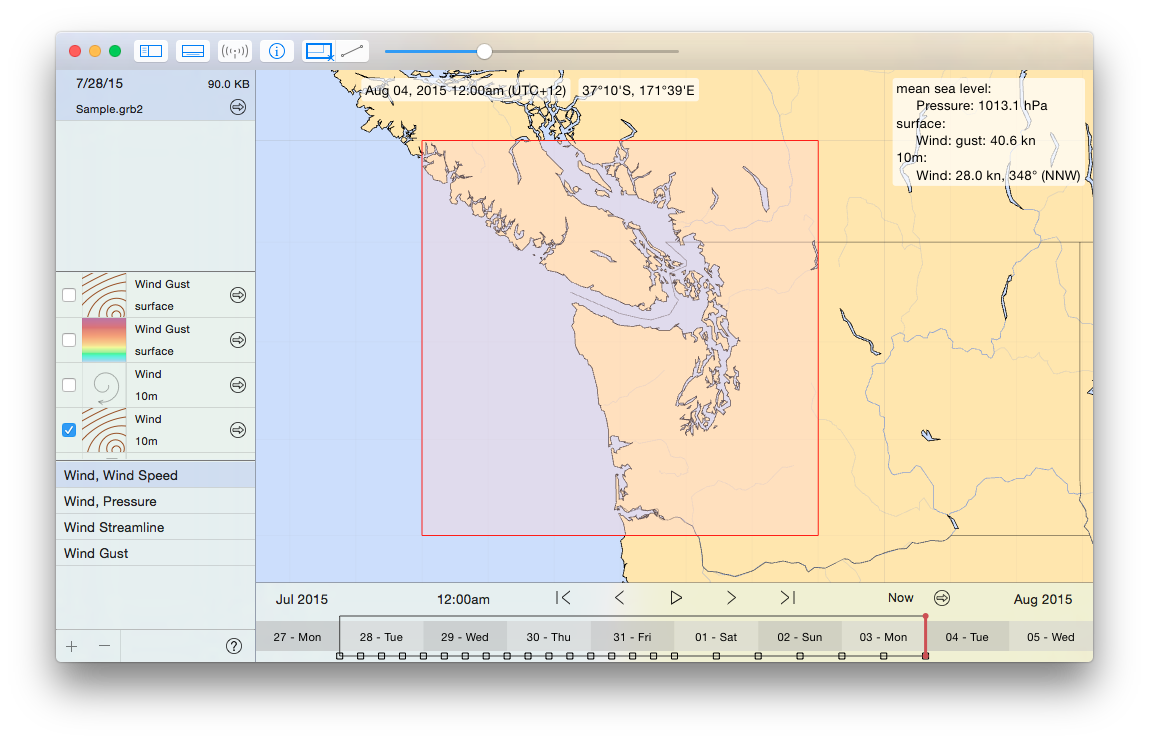
The first step in the process of downloading GRIB data is to choose the region on the map where you want the data. To do this, make sure the Select Region tool is highlit, and then click and drag on the map to create a selected region.
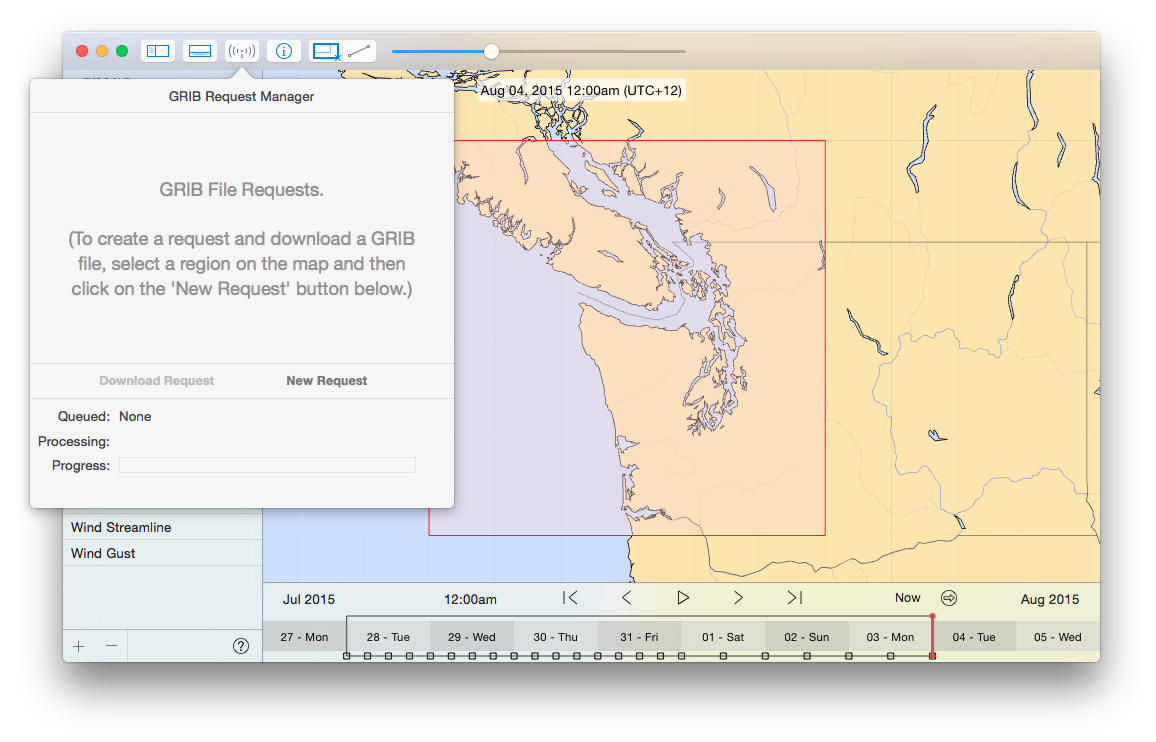
The second step is to create a new request by clicking on the Download GRIB File icon in the toolbar. This will show you a list of your previous requests and allow you to either select one of them and download data for it again, or to create a new request. In this case, click on the New Request button.
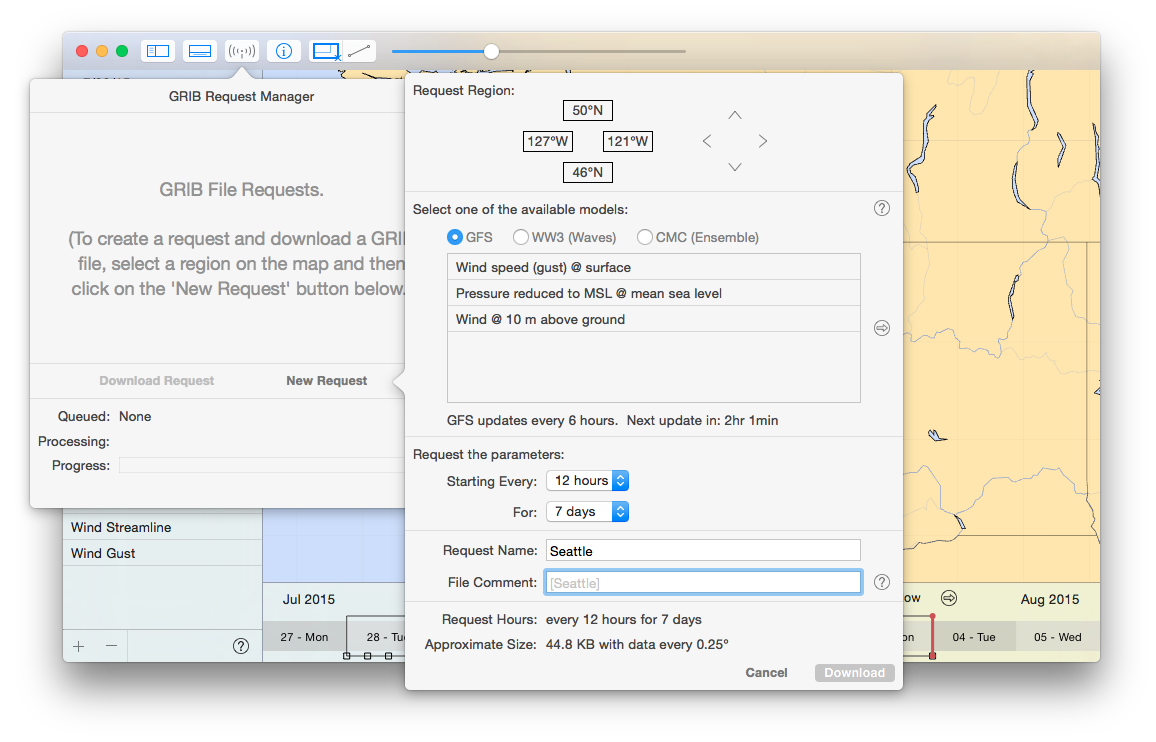
You now have the option of setting the GRIB request up as you like it. You have choices over which model to use (GFS, CMC or WW3), which parameters to download (wind, pressure, rain, cloud, etc), low long the forecast should be, how many time intervals you want through the forecast and how detailed the file should be (its resolution.) Once all of these are set, click on the Download button.
Note that there is a Reveal icon to the right of the default options (wind gust, pressure and wind in this case.) Click on that Reveal icon to alter the request parameters.
When the request is setup as you want, click on the Download button.

Wait for the download to complete.
When the download is finished, the newly downloaded GRIB file will be in the list. Click on it to view its content.
Feel free to view the video, which describes how to update the data associated with a GRIB request. In short, you can simply open the Download GRIB File window, select the request(s) you want to update, and click the Download button. All of the previously setup information for the request will be used again.
Note that if you try to download new data for a request when the server does not yet have new data available will cause a message to be displayed to that effect. The application will not download the same data twice - there is no point, if the data hasn’t changed, you already have it!
Measuring Distance and Wind
The Measure Distance tool allows you to draw a line on the map. This can be used to simply measure the distance between two points, as well as to estimate how long it will take to sail somewhere and what the conditions along the way may be.
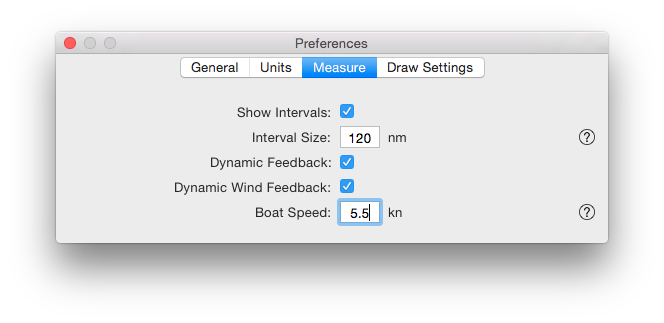
You are able to set a number of preferences for the Measure Distance tool. Let the tool know how far apart it should space the intervals it shows. A common distance for the interval is the average distance sailed. This would then show an estimate of how many days it would take to get somewhere, as well as approximately where you would be after traveling for one, two or three days (and so on.) You can also optionally let the tool know your average sailing speed. This can be used to let it calculate the apparent winds, as shown in the next image.

Customization
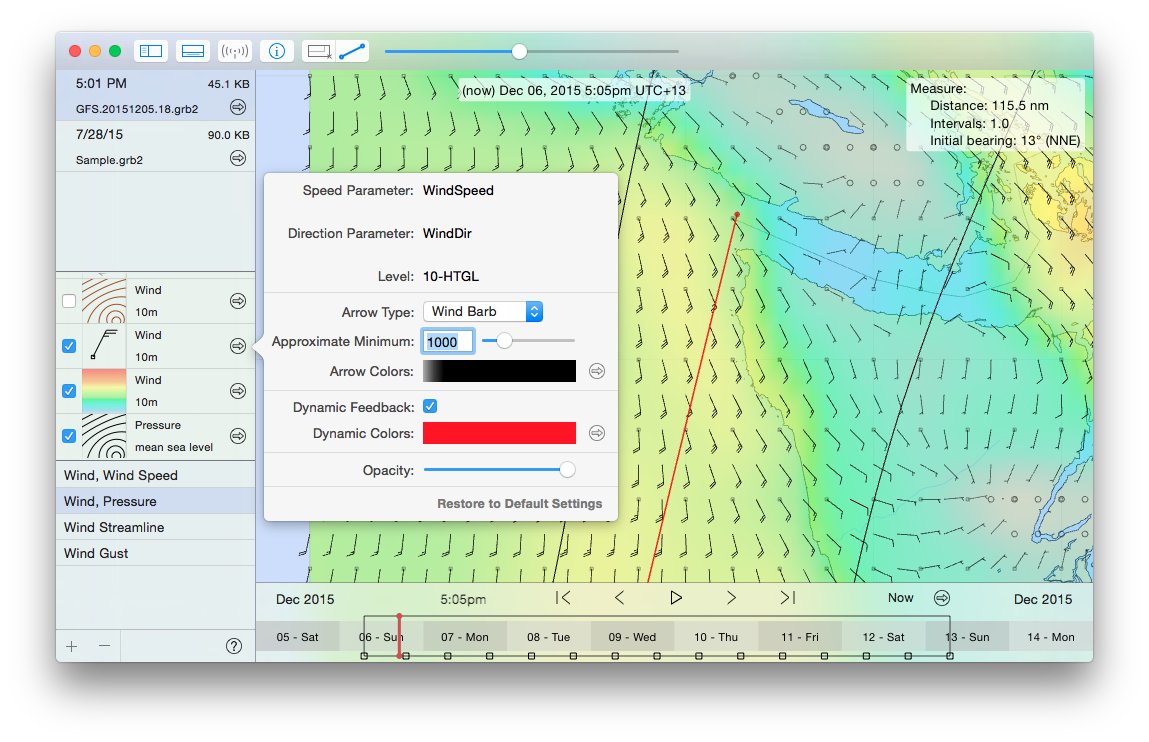
All of the Draw Styles can be extensively customized. Click on the Reveal icons to the right of any of the Draw Styles to see the set of parameters that controls it.
There’s more
That’s a quick introduction to LuckGrib. Keep exploring, there is more to find!